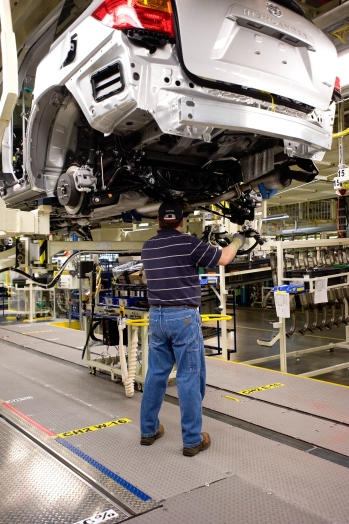 WASHINGTON , U.S. — Manufacturing output rose in May at a solid pace, boosting hopes that the economy is expanding briskly after a dismal first three months of the year.
WASHINGTON , U.S. — Manufacturing output rose in May at a solid pace, boosting hopes that the economy is expanding briskly after a dismal first three months of the year.
Americans, buoyed by steady job gains, are buying more cars, while businesses are ordering more machinery and other equipment. Those trends are fueling factory production and driving growth.
Factory output rose 0.6 per cent in May after dipping 0.1 per cent the previous month, the Federal Reserve said Monday. Aprils figure was revised upward from an initial estimate of a 0.4 per cent decline.
Overall industrial production, which includes manufacturing, mining and utilities, also rose 0.6 per cent in May. It had fallen 0.3 per cent in April.
Mining output, which includes oil and gas production, jumped 1.3 per cent, while utility output declined 0.8 per cent, its fourth straight drop.
Industrial production grew 4.3 per cent in the past 12 months, the fastest annual pace in nearly two years.
With manufacturing accelerating, there is every good reason to believe that the economy is beginning to hit its stride, Joel Naroff, president of Naroff Economic Advisors, said in a note to clients.
Last month, factories produced more autos, furniture, industrial machinery, computers and appliances, a sign of healthy consumer and business demand.
The nations factories are running at 77 per cent capacity, the most in six years, though still 1.7 percentage points below the long-run average. As factories move closer to full capacity, factory owners will face pressure to invest in plants and equipment, a trend that could boost the economy.
The data follows other recent reports that also point to steady increases in factory production. Auto sales reached a nine-year high in May as Americans ramped up purchases of SUVs and pickup trucks.
A survey this month by the Institute for Supply Management, a trade group of purchasing managers, found that manufacturing expanded faster in May than in April. Growth was broad based across nearly all the 18 sectors the survey covers.
And the ISM surveys measure of orders rose, a sign that output should remain healthy in the months ahead.
Manufacturers are hiring more to keep up with demand. Factories added 10,000 positions in May, and the average work week for manufacturing employees grew.
Greater factory output would help drive growth after the U.S. economy shrank at a 1 per cent annual rate in the first quarter, though recent reports indicate that the contraction was probably larger. Many economists now think the government will say the economy shrank at a 2 per cent pace when it revises its estimate next week.
Still, most analysts expect the economy to rebound and grow at a roughly 3.5 per cent annual pace in the second quarter and at a 3 per cent rate in the second half of the year.




